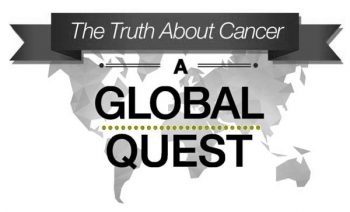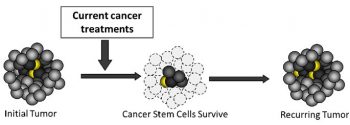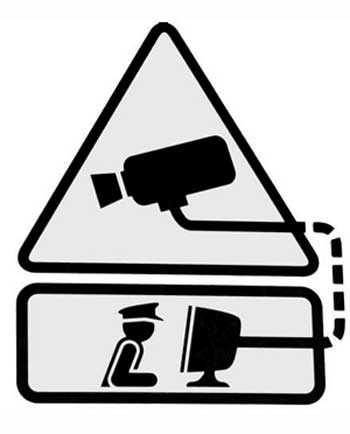Cause - Target - Effect
Last time we spoke of the first stage in problem-solving methodology: Problem Definition. Previously I brought to you an article on Root Cause Analysis. In order to proceed and understand problem-solving methodology, we need to speak the same language. Thus, in this article, I shall focus on a trinity of basic terms: cause – target – effect.
Three concepts which are so familiar, and yet, most people tend to constantly confuse them. Nowhere are we taught about them. How are they alike and what is the difference? How are they used and for what purpose? What difference does it make, anyway? This is what we shall discuss today.
First, we need to understand why these concepts are so important and learn to distinguish between them.
Well, a central reason is precisely the command of these two stages of problem-solving methodology: Problem Definition and Root Cause Analysis. Without grasping the difference between these three concepts we cannot comprehend the essence of problem-solving methodology at all. This will directly result in ineffective solutions – or merely treating symptoms.

What we have now galore, in every imaginable field? – That’s right! Ineffective solutions and treatment of symptoms.
Why? Because most people do not understand the basic and crucial difference between cause – target – effect, and cannot identify them in any process they deal with. And without them there is simply no problem-solving methodology. There is, instead, fumbling in the dark and searching under lampposts, at best.
So let’s bring some order to the confusions, and l’d like to do that, with your permission, in a different order.

Target
Problem Definition, which was the subject of discussion in the previous article, is the first stone in the foundation of the methodology. In fact, it is tied to the second concept: target.
Why are we doing all this? What do we want to achieve? What do we wish to correct or improve?
The target becomes clear with the proper definition of the problem.
And when we have a target for the solution process, then we know whence we are coming from and whither we are bound. And then we may make a plan, set goals, monitor progress, correct path, measure effectiveness… Then we can progress not by guesswork, not by stumbling in the dark. W e can stop searching under lampposts someone graciously planted, unconnected to our problem. We may then plant lampposts where we need them, and focus their light precisely on the problem areas.
Effect
We have established, during the Problem Definition stage, that what bothers us is the symptom, not the problem itself. But what is that symptom? That headache?
It is an effect. A result.
Result of what? Result of that malfunctioning mechanism, which we identified during the first Problem Definition stage. The mechanism doesn’t work properly as it should, and as a result a symptom appears – something which bothers us. Something, which is supposed to alert us to the very fact, that the mechanism requires correction, tuning, maintenance, change, replacement…
But that’s not all. Effect is not always a symptom. It can come in different shapes.

Sensitivity to the symptom
Let’s turn our attention to a manufacturing process, and take, for example, machining. And let us recall one of Quality Assurance giant and humble gurus: the Japanese engineer, Genichi Taguchi. Taguchi has introduced the concept of noise into our profession, has coined the term “Loss Function”, and I have spoken of these in the article “Noise Proof”.
If a product is within the tolerance window, it still doesn’t mean this product is “good”, or of high quality. However, no flag is raised, which simply means – there are no symptoms. Therefore, the result of the process is a product of acceptable quality, with no symptoms. Does that mean there are no issues?

Taguchi teaches us that no, of course it doesn’t. The malfunctioning mechanisms usually do not just suddenly break. Like in the case of the headache, it rarely appears out of the blue. It takes time to manifest, unnoticed, sometimes for years. Bit by bit, its effect builds up until one day such a combination falls into place that… bang! There is a symptom! And it bothers us, and the product deviates from specification.
Builds up bit by bit, unnoticed?
Exactly. We may not be sensitive enough, ignore detectable mini-symptoms, postpone what needs to be done or choose to not do it, because – whatever for? If it’s not broke – don’t fix it, right?
To identify something, we need symptoms. And to have symptoms – we need to raise sensitivity and actively monitor the process trends, and the relative state of the products within the manufacturing process. In other words, active statistical process control of the critical parameters. This would allow us to identify symptoms earlier. To find the trend without waiting for the process to get “broke”.
Cause
To solve a problem, or to improve a mechanism, which does not function the way it should, we must identify and understand the underlying root cause from which the malfunctioning or the inability to yield the desired result stems. In other words – the cause. And this is the second stage of problem-solving methodology: Root Cause Analysis.
The root cause is that parameter (or parameters) responsible for the malfunction, or less than optimal function, of the mechanism we have identified in Problem Definition.
It is the cause bringing forth the effect. Only treating it may solve the problem.
I must note, to be clear:
The fact that we treat the root cause and perform corrective actions is not in itself a guarantee of efficient solution. But not treating the root cause is a guarantee of not getting a solution.

All together now
Now that the interrelationship between the three basic terms are clear, we may see why all three must be identified, when solving any problem:
- the result (symptom): bothers us or isn’t good enough;
- the target: problem definition, identifying the mechanism from which the symptom originates;
- the cause: discovering the underlying root causes for the mechanism to function improperly or insufficiently;
- corrective action: correcting the mechanism’s function;
- ensuring efficiency: testing the new result over time and in varying working conditions.
To demonstrate the importance of this process, let’s take another example from health and medicine, so near to us all.

Cancer and its conventional treatment
Let’s take, as an example, cancer. It’s one of the scariest words in existence today all over the world. That is due to the fact that most of us know many people who have been personally touched by it, or are struggling with it right now. And because so many of these people are no longer with us.
This year a new, 9-episode documentary series has been released, called “The Truth About Cancer”. Episode by episode, one interview after another, doctors, scientists, nurses and other medical professionals and researchers from all over the globe, the series spreads before us the secrets of the disease and its treatments. And very clearly educates us, so we understand not only what exists and is available to us, but also why and how everything works. In additions, the series shatters and exposes several medical myths which most of us were brought up to believe without doubt or questioning.
I would like to state that I have no vested interest in the series or its creators. In addition, I am aware that many conventional doctors do not support its content, statements or conclusions – which doesn’t surprise me. My approach is: each will make their own choices. But what is a choice when no options are available to us? In order to choose one must at least see hear and weigh several options – otherwise what are we choosing from?
Defining cause - target - effect
So let’s take, for instance, the place where the disease itself is discussed, and the way conventional medicine treats it.
The scientists and physicians explain how the cancer is made of two parts. One is the tumor, the cancer cells. And the other – stem cells, which make the cancer cells grow and control growth rate. The viewers learn that cancer cells live and appear in healthy bodies all the time, and the immune system is supposed to identify, attack and eliminate them.
Then we learn how the conventional medical treatment, chemotherapy or radiation, is designed to attack the cancer tumor and kill it. This is what it does, too. Only, along the way, it also kills body’s systems, above all – its immune system. The one which is supposed to prevent cancer cells’ growth and eliminate them as they appear.
The tumor is the effect, the symptom. So far so good, right?
But here-forth begins the problem, at the definition stage. For conventional medical professions, the target is elimination of the tumor. But the tumor is not the cause of the disease, it’s the effect. The symptom. The tumor grows within the body for many years, without us noticing it. It is the result of a mechanism which doesn’t work correctly: the immune system, which, again, is supposed to identify and eliminate the cancer cells. Without us spotting the process at all. Naturally. Constantly.
But the immune system doesn’t work as it should, and it’s a malfunctioning, “defective” mechanism. This is the Problem Definition. Thus, had we been working according to problem-solving methodology, this is how it would look:
- Effect (symptom): tumor.
- Cause: weakening of the immune system allows tumor growth over the years.
- Target: correct, boost the immune system to make it operate as it should to eliminate the cancerous cells in our bodies. Perhaps assisting it in eliminating the tumor (by means which do not damage the immune system).
- New result: fortified, strong immune system eliminates cancer cells naturally.
The target is not eliminating the tumor.
In other words, due to lack of problem definition, not only does the conventional “treatment” fail to solve the problem, but it actually enhances it. For now, after the “treatment”, the immune system lies in ruins, and will take a long time to recover, while we are exposed to all manner of illness, with no defenses. There’s nothing to eliminate cancer – or anything else.
Treatment for the treatment
Conventional medicine acknowledges the problem of the immune system collapse afterwards.
It also offers to remedy this in its own conventional way. Sort of treatment for the problem created by the treatment. The doctor prescribes the patient a plethora of drugs, to replace a functioning immune system ruined by the treatment.
But every drug has various side effects, and they continue the devastating process of wrecking additional mechanisms in the patient’s body. These, in turn, would need more drugs to overcome the damage, and the cycle spins out of control…
However, that is still not all.

Treatment's side effects
Remember the stem cells? Those responsible for of cancer cells’ growth? They are not affected by the “treatment”, and continue to grow more cancer cells. Had the immune system worked normally, growth rate would have been slow, as before. But now, with the ruined immune system, nothing checks the growth of new cancer cells, and the tumor grows back, and much faster. Therefore, almost always, a few years after the first “treatment” the tumor appears again, growing dangerously, and the doctors bring the patient to another “treatment”. Will he survive it? That’s not at all certain. With every repeat treatment, the chance of survival lowers.
The chance of survival, that is the chance to survive the treatment.
Why? Because the body arrives to treatment already exhausted and full of patchwork treatments, barely functioning, with ruined systems and devastating damage from the many drugs taken habitually. And now it is hit with another blast of chemotherapy, ruining all systems even more…
And the most crucial blunder
Not only did the treatment focus on the symptoms, but no one anywhere along the way has analyzed why did the patient’s immune system not work properly in the first place. What was lacking? Was it exposed to anything bad for it? The root cause was not only untreated, it was not even investigated!
So the process looks like this:
- The effect (symptom) bothers us.
- The stage of Problem Definition is not performed; the mechanism to which the symptom points (immune system) is not identified. As a result the wrong target is chosen (eliminating the symptom).
- The wrong thing is chosen as process focus – the tumor, the effect.
- Because the malfunctioning mechanism was not identified, the root cause to immune system malfunction is not investigated.
- The immune system operation is not corrected.
- Due to the wrong target being chosen, the wrong “treatment” is being performed.
- The treatment damages the immune system more and intensifies the problem further.
- The “treatment” proposed to counter the ruin of the immune system adds up to the problem and contributes to its growth.
- The problem returns (the system – tumor) much faster and worse.
- A repeat “treatment” of the repeat symptom is much more dangerous under the new conditions, and in many cases is fatal.
This is what happens when there is no clear differentiation between cause – target – effect. There is no connection between the problem, the mechanism responsible and the treatment. And the results of the treatment are as can be expected.
Al those who are now raging at me for opening this process here, ask yourselves the following question. How can it be, that for the past 100 years… you know what, let’s even make it the last 50 years… scientists focus on the solutions for cancer, but the chances of survival for the “survivors” don’t rise perceptibly?
The American Cancer Society is telling us, that the chances for men who haven’t had cancer before to have cancer is 43.3%, and for women is 37.8%. And that half of both these groups are likely to die.
Read it again: more than 1 in 3 will get the disease, and half of them will die. And they call it a good treatment?
The Society also tells us that the chances of surviving for the “cancer survivors” after a year is 77.7%; after 2 years – 69.9%; after 3 years – 65.1%; after 4 years – 61.5%; after 5 years – 58.4%…
To fully understand this, precisely because 1 in 3 people will get the disease in his lifetime, per today’s statistics, I would recommend to just watch the 9-episode series and educate yourselves. Get as much information as you can about the disease, the prevention and the different solutions available to us. I have just sampled a single mechanism here to demonstrate the devastating result of solving a problem without understanding its correlating cause – target – effect. You may watch the first 2 episodes here for free, and then decide whether you wish to donate the symbolic amount they are asking for the whole series to a good cause its creators dedicate themselves to promote.
And in every field, not just about cancer, you shall find a similar state of affairs. If we fail to identify the three basic concepts for our problem, we may not provide a good, effective solution. Working according to methodology is not a guarantee of success; but working without methodology is a guarantee of failure.
And I don’t know about you, but it’s a no-brainer for me what I prefer.
Picture of a broken window and a baseball: original image taken from Anchor glass and Cabinet, a glass-repairing company website.
Logo of “The Truth about Cancer. A Global Quest” was taken from Ty Bollinger’s website.
Picture of the conventional cancer treatment mechanism was taken from “Stem Cells: Research, Treatments, and Ethics” on Google sites.
This post is available also in:
 עברית
עברית
You may also find interesting:
Powered by Contextual Related Posts












